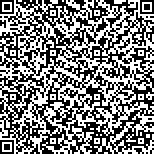| 引用本文: | 曹正罡,李亮,汪天旸,王志成.铝合金毂式节点轴向拉压受力性能有限元分析[J].哈尔滨工业大学学报,2020,52(8):184.DOI:10.11918/201904076 |
| CAO Zhenggang,LI Liang,WANG Tianyang,WANG Zhicheng.Finite element analysis of axial tension and compression behavior of aluminum alloy hub joints[J].Journal of Harbin Institute of Technology,2020,52(8):184.DOI:10.11918/201904076 |
|
| 本文已被:浏览 1085次 下载 784次 |

码上扫一扫! |
|
|
| 铝合金毂式节点轴向拉压受力性能有限元分析 |
|
曹正罡1,2,李亮1,2,汪天旸1,2,王志成1,2
|
|
(1.结构工程灾变与控制教育部重点实验室(哈尔滨工业大学),哈尔滨 150090; 2.哈尔滨工业大学 土木工程学院,哈尔滨 150090)
|
|
| 摘要: |
| 为探究空间结构体系中铝合金毂式节点受力性能,采用非线性有限元软件ABAQUS建立了25个不同尺寸的铝合金毂式节点精细化数值模型研究其受拉和受压性能,并分析了毂体槽间距、齿间距、齿宽度、齿深度等因素对节点受力性能的影响.分析结果表明:节点受拉承载力主要由毂体与杆件嵌入部分之间凹凸齿槽承担;改变主要参数,节点受拉极限状态共出现毂体凸齿弯剪破坏、毂体最内侧槽部弯剪破坏、毂体最外侧槽部弯剪破坏和毂体凸齿剪切破坏4种破坏模式;在研究范围内增大毂体槽间距和齿宽度,节点抗拉极限承载力增加71.3%和112.9%;节点受压极限状态主要为失稳破坏,主要参数的改变对其承压性能影响较小.最终给出研究范围内节点抗拉极限承载力公式和设计建议. |
| 关键词: 空间结构体系 铝合金毂式节点 破坏模式 受力性能 有限元分析 |
| DOI:10.11918/201904076 |
| 分类号:TU395 |
| 文献标识码:A |
| 基金项目:国家自然科学基金面上项目(51878218) |
|
| Finite element analysis of axial tension and compression behavior of aluminum alloy hub joints |
|
CAO Zhenggang1,2,LI Liang1,2,WANG Tianyang1,2,WANG Zhicheng1,2
|
|
(1.Key Lab of Structures Dynamic Behavior and Control (Harbin Institute of Technology), Ministry of Education, Harbin 150090, China; 2.School of Civil Engineering, Harbin Institute of Technology, Harbin 150090, China)
|
| Abstract: |
| To explore the mechanical performance of aluminum alloy hub joints in spatial structure system, nonlinear finite element software ABAQUS is used to establish refined numerical models for 25 aluminum alloy hub joints with different sizes to study the tensile and compressive properties. The effects of hub body groove spacing, tooth spacing, tooth width, tooth depth, and other factors on the mechanical performance of the nodes are studied. Results show that the tensile bearing capacity of the joint is mainly borne by the concave and convex grooves between the hub body and the embedded part of the rod. When the parameters are changed, there are four failure modes in the tensile limit state: hub body convex tooth flexural shear failure, hub body innermost groove flexural shear failure, hub body outermost groove flexural shear failure, and hub body convex tooth shear failure. Within the range of study, if the hub body groove spacing and tooth width are increased, the tensile ultimate bearing capacity of the nodes increase by 71.3% and 112.9% respectively. The stress of joints is mainly caused by instability, and the change of parameters have little effect on the pressure of joints. Finally, the formula of ultimate bearing capacity and the design suggestion are given. |
| Key words: spatial structural system aluminum alloy hub joint failure mode mechanical performance finite element analysis |







